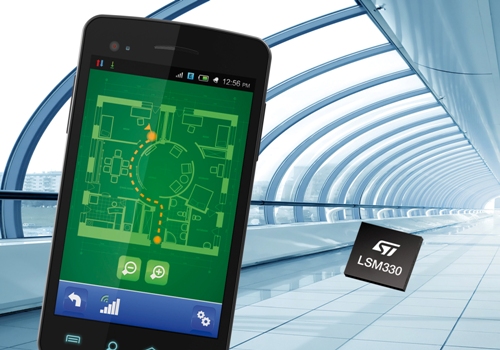STMicroelectronics has unveiled an ultra-compact multi-sensor MEMS module equipped with programmable motion-recognition capabilities called the LSM330.

The 6-axis sensor device improves motion-sensing realism and user experience in power-hungry and space-constrained portable consumer devices and represents a significant progress towards wearable sensor applications in healthcare diagnostics, fitness and sports.
This newest iNEMO inertial module features a 3-axis digital accelerometer and a 3-axis digital gyroscope with two built-in finite state machines, which are programmable blocks that allow custom motion recognition within the module. Programmable state machines facilitate the detection of particular gestures or motions and activate related applications or actions. MEMS sensors’ built-in processing capability facilitates reduction in power usage in battery-hungry portable devices, thus providing more options to the design of motion-enabled consumer electronics.
The LSM330 accommodated in a miniature 3x3.5x1 mm LGA package senses angular rate as high as 2,000 dps along the yaw, roll and the pitch axes and acceleration as high as 16 g. The combination of high-resolution linear- and angular-motion detection in one device improves system robustness, and the cutting-edge module design enables better mechanical and thermal stability. This multi-sensor module holds potential in myriad of applications, which include map-matching and motion detection for location-based services such as augmented reality and indoor and outdoor navigation; motion-activated user interfaces in consumer devices such as tablets and phones; and wearable sensor applications.
The 6-degrees-of-freedom module features sleep and power-down modes and a built-in first-in first-out memory block for efficient power management to handle power issues in battery-operated portable devices. Its operating voltage range is between 2.4 and 3.6 V. It is software-compatible with the company’s advanced 3-axis digital accelerometers (LIS3DSH) and gyroscopes (L3GD20), thus enabling customers utilizing single-function sensors to improve their designs by decreasing the count of external components, board size and overall application system complexity.
Source: http://www.st.com